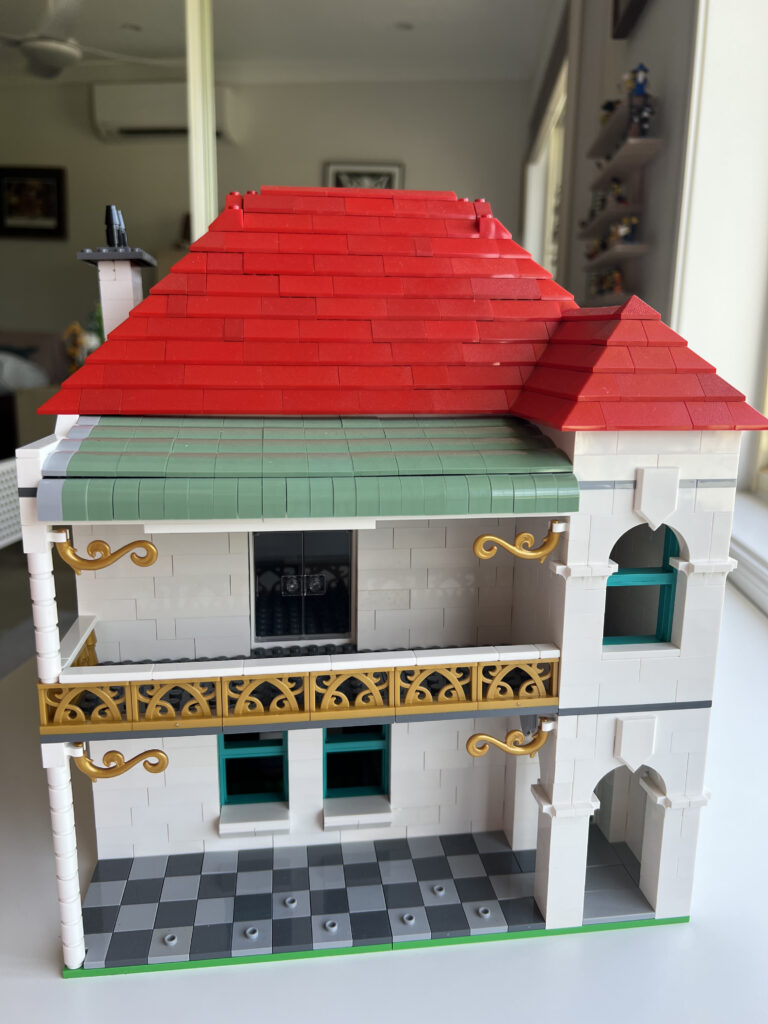This build is based on the Australian Federation style of architecture dating back to the turn of the last century. Many Sydney neighborhoods feature rows of charming little cottages in the Federation style, though if you look at the aerial view in Google Maps you can see that most of the original small homes have been extended at the back to add more rooms. For this build I stuck to the original footprint. However, Lego interiors end up much smaller than their real-life counterparts, so what was probably a two-bedroom house in real life is now a studio apartment inside.
Nonetheless, I’m happy with this build. Features include:
The typical asymmetric front (the living room sticks out with a sort of bay window), as seen above.
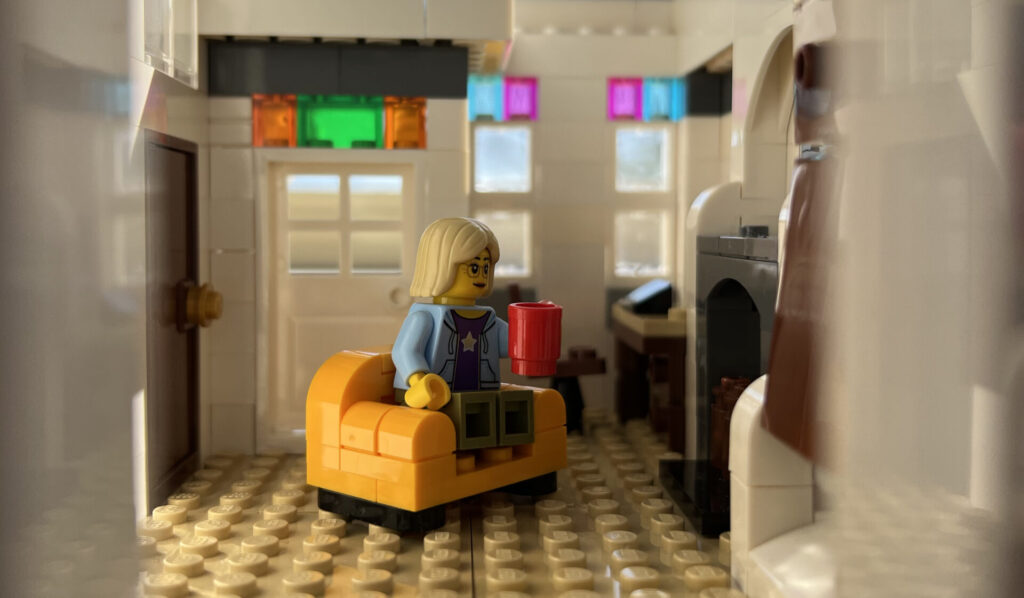
Windows with colored glass panels top and bottom, shown above. And fireplaces.
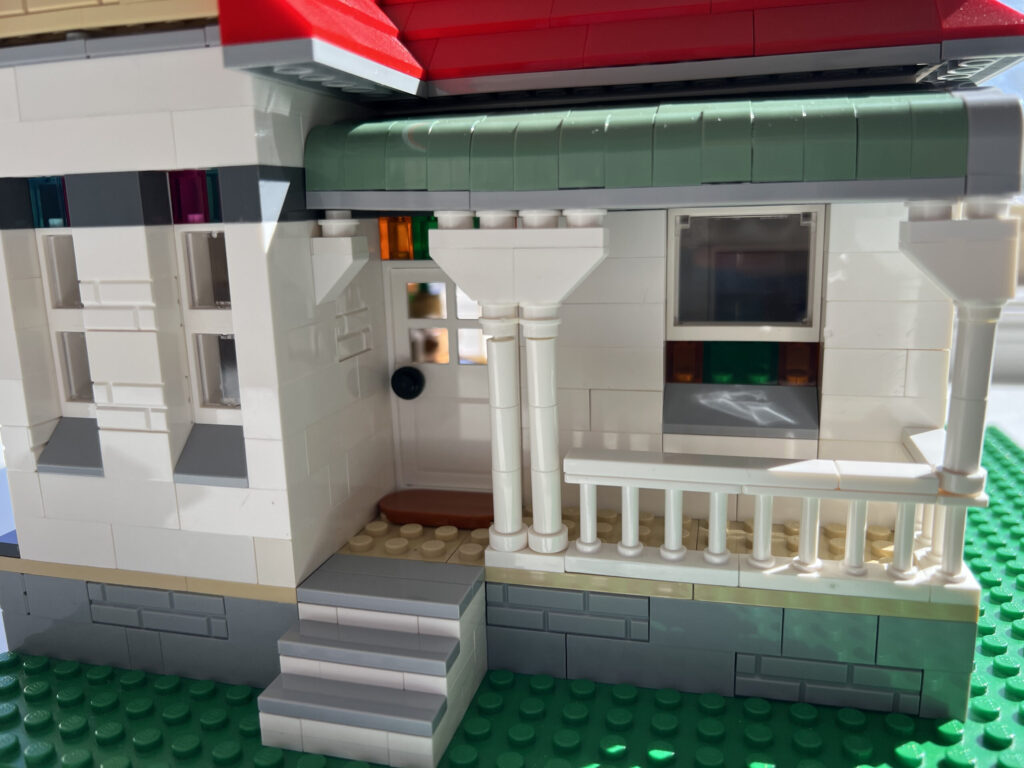
Above: Many Australian homes (from multiple periods) use corrugated tin to roof their front porches, with a characteristic downcurve along the front. The supports for these roofs often feature filigree fretwork which is hard to reproduce in Lego.
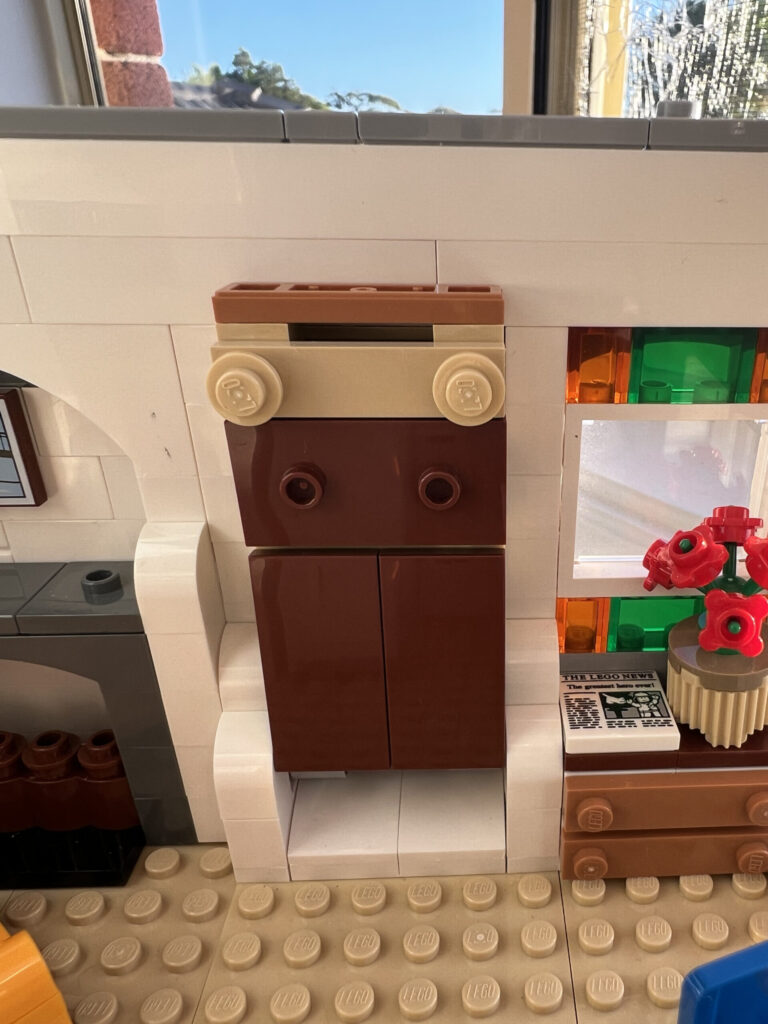
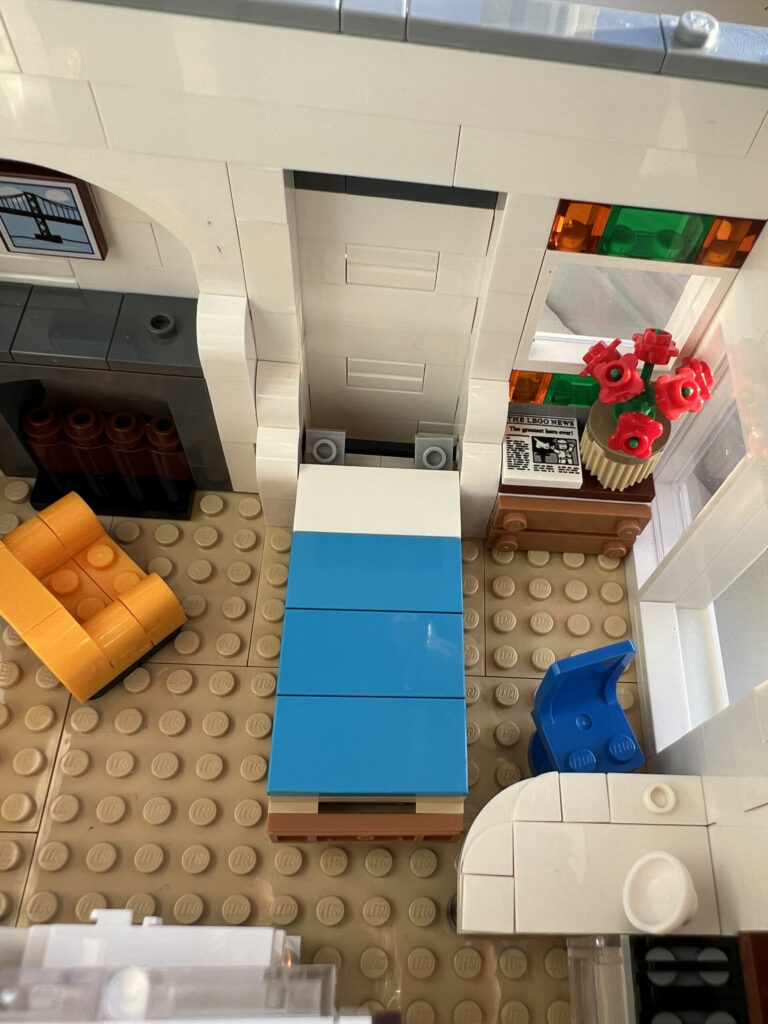
Above: Absolutely nothing to do with Federation architecture, but it made sense for trying to make this into a “liveable” space for a minifig: I built in a working murphy bed. It was too flimsy, however: it broke in a way I can’t fix without tearing down most of the wall. I’ll design it better next time.
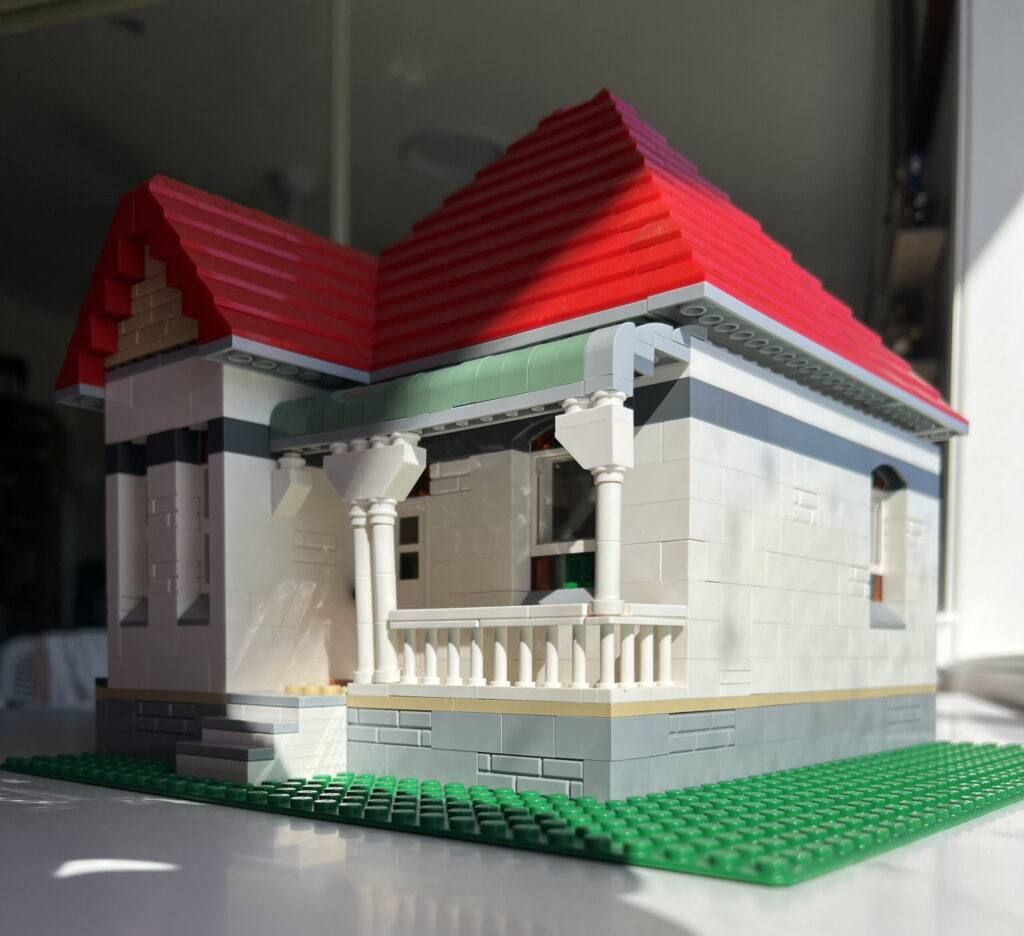
Above: The red roof is made of sloped bricks that were originally intended to be used to build Lego roofs, but are considered old-fashioned now and not used much in modern builds. I happen to like them and own a lot of them, and they work pretty well for the complex roofs found on many Australia homes.

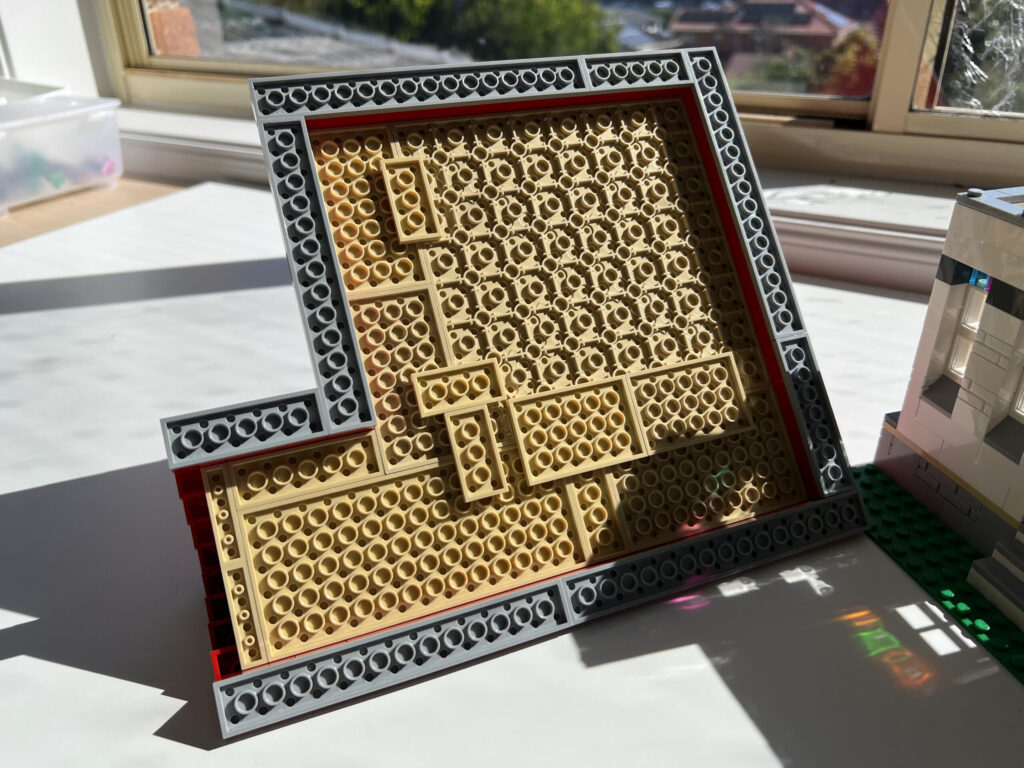
However, modern Lego builds tend to be “modular”, meaning that you can remove roofs and levels to access the interior of a building. Modern builds are also done with narrower bricks (1x instead of 2x studs wide), but I own many of the classic white 2×4 bricks. Building with these meant I could step in the walls at the top and then build a roof unit with an overhang so that the roof fits securely and stays in place, but is easily removed. Most of the interior photos were taken with the roof removed.
Full gallery:
* MOC = “My Own Creation”, in other words a Lego build you invent for yourself. Some Lego creators sell MOC designs.







